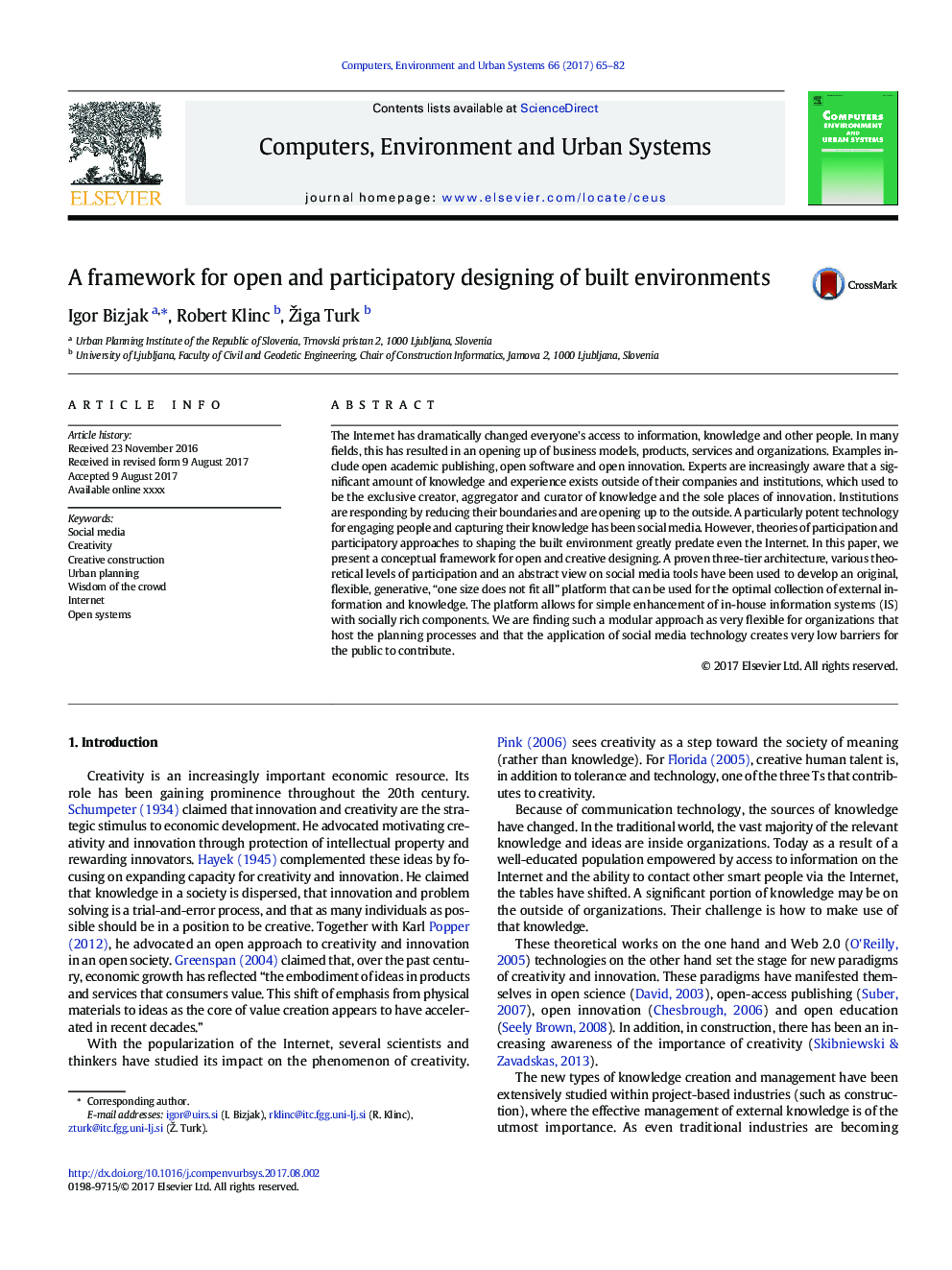| Article ID | Journal | Published Year | Pages | File Type |
|---|---|---|---|---|
| 4965201 | Computers, Environment and Urban Systems | 2017 | 18 Pages |
Abstract
The Internet has dramatically changed everyone's access to information, knowledge and other people. In many fields, this has resulted in an opening up of business models, products, services and organizations. Examples include open academic publishing, open software and open innovation. Experts are increasingly aware that a significant amount of knowledge and experience exists outside of their companies and institutions, which used to be the exclusive creator, aggregator and curator of knowledge and the sole places of innovation. Institutions are responding by reducing their boundaries and are opening up to the outside. A particularly potent technology for engaging people and capturing their knowledge has been social media. However, theories of participation and participatory approaches to shaping the built environment greatly predate even the Internet. In this paper, we present a conceptual framework for open and creative designing. A proven three-tier architecture, various theoretical levels of participation and an abstract view on social media tools have been used to develop an original, flexible, generative, “one size does not fit all” platform that can be used for the optimal collection of external information and knowledge. The platform allows for simple enhancement of in-house information systems (IS) with socially rich components. We are finding such a modular approach as very flexible for organizations that host the planning processes and that the application of social media technology creates very low barriers for the public to contribute.
Related Topics
Physical Sciences and Engineering
Computer Science
Computer Science Applications
Authors
Igor Bizjak, Robert Klinc, Žiga Turk,
